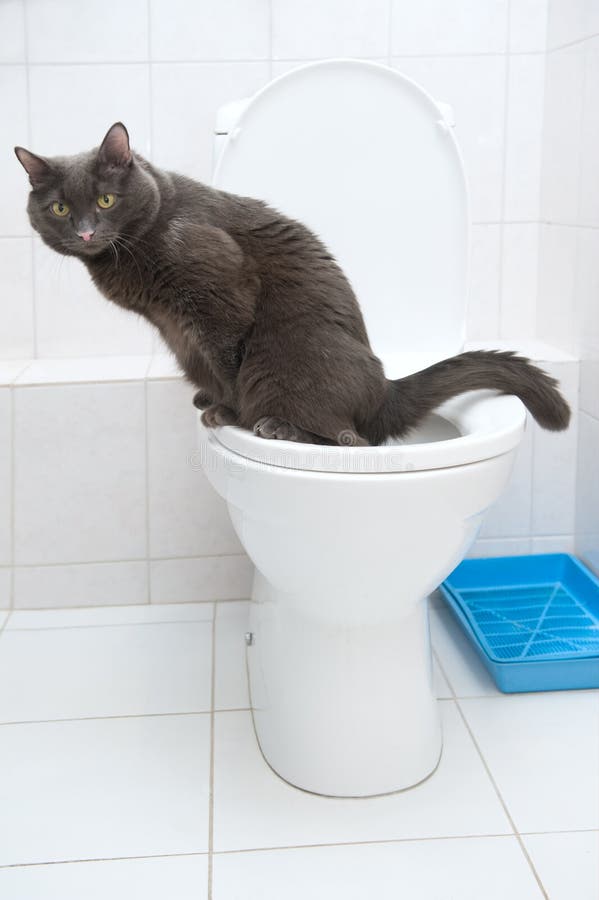The Consequences of Flushing Cat Poop Down Your Toilet - Safeguard Your Pipes
The Consequences of Flushing Cat Poop Down Your Toilet - Safeguard Your Pipes
Blog Article
Have you been interested in related information concerning Don’t flush cat feces down the toilet?

Intro
As cat owners, it's important to bear in mind how we dispose of our feline buddies' waste. While it might appear hassle-free to purge cat poop down the toilet, this method can have destructive effects for both the environment and human health.
Alternatives to Flushing
The good news is, there are more secure and more accountable methods to dispose of cat poop. Take into consideration the following choices:
1. Scoop and Dispose in Trash
One of the most common method of throwing away pet cat poop is to scoop it into a naturally degradable bag and toss it in the trash. Make certain to utilize a dedicated clutter scoop and throw away the waste without delay.
2. Use Biodegradable Litter
Go with biodegradable feline litter made from materials such as corn or wheat. These litters are eco-friendly and can be safely gotten rid of in the trash.
3. Hide in the Yard
If you have a backyard, consider hiding pet cat waste in a marked location away from veggie gardens and water resources. Be sure to dig deep adequate to prevent contamination of groundwater.
4. Mount a Pet Waste Disposal System
Buy a pet dog waste disposal system especially created for cat waste. These systems utilize enzymes to break down the waste, reducing smell and environmental influence.
Health Risks
Along with ecological issues, flushing pet cat waste can likewise posture wellness threats to humans. Cat feces may contain Toxoplasma gondii, a parasite that can cause toxoplasmosis-- a possibly serious illness, especially for expecting women and people with damaged immune systems.
Ecological Impact
Flushing pet cat poop presents damaging virus and parasites right into the water system, positioning a significant threat to water ecological communities. These impurities can negatively affect marine life and concession water high quality.
Verdict
Accountable pet dog ownership extends past providing food and shelter-- it additionally includes appropriate waste management. By avoiding flushing feline poop down the bathroom and selecting different disposal methods, we can reduce our ecological footprint and protect human health and wellness.
Why Can’t I Flush Cat Poop?
It Spreads a Parasite
Cats are frequently infected with a parasite called toxoplasma gondii. The parasite causes an infection called toxoplasmosis. It is usually harmless to cats. The parasite only uses cat poop as a host for its eggs. Otherwise, the cat’s immune system usually keeps the infection at low enough levels to maintain its own health. But it does not stop the develop of eggs. These eggs are tiny and surprisingly tough. They may survive for a year before they begin to grow. But that’s the problem.
Our wastewater system is not designed to deal with toxoplasmosis eggs. Instead, most eggs will flush from your toilet into sewers and wastewater management plants. After the sewage is treated for many other harmful things in it, it is typically released into local rivers, lakes, or oceans. Here, the toxoplasmosis eggs can find new hosts, including starfish, crabs, otters, and many other wildlife. For many, this is a significant risk to their health. Toxoplasmosis can also end up infecting water sources that are important for agriculture, which means our deer, pigs, and sheep can get infected too.
Is There Risk to Humans?
There can be a risk to human life from flushing cat poop down the toilet. If you do so, the parasites from your cat’s poop can end up in shellfish, game animals, or livestock. If this meat is then served raw or undercooked, the people who eat it can get sick.
In fact, according to the CDC, 40 million people in the United States are infected with toxoplasma gondii. They get it from exposure to infected seafood, or from some kind of cat poop contamination, like drinking from a stream that is contaminated or touching anything that has come into contact with cat poop. That includes just cleaning a cat litter box.
Most people who get infected with these parasites will not develop any symptoms. However, for pregnant women or for those with compromised immune systems, the parasite can cause severe health problems.
How to Handle Cat Poop
The best way to handle cat poop is actually to clean the box more often. The eggs that the parasite sheds will not become active until one to five days after the cat poops. That means that if you clean daily, you’re much less likely to come into direct contact with infectious eggs.
That said, always dispose of cat poop in the garbage and not down the toilet. Wash your hands before and after you clean the litter box, and bring the bag of poop right outside to your garbage bins.
https://trenchlesssolutionsusa.com/why-cant-i-flush-cat-poop/

I hope you enjoyed reading our piece about How to Dispose of Cat Poop and Litter Without Plastic Bags. Thanks a ton for taking time to read through our post. If you please set aside a second to promote this page if you enjoyed it. I take joy in reading our article about How to Dispose of Cat Poop and Litter Without Plastic Bags.
Contact Us Today Report this page